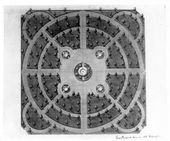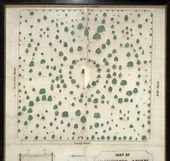Washington Square (Philadelphia, PA)
[http://www.nga.gov/content/ngaweb/research/casva/research-projects.html A Project of the National Gallery of Art, Center for Advanced Study in the Visual Arts ]
Overview
Alternate Names:
Site Dates:
Site Owner(s):
Site Designer(s):
Location:
Philadelphia, Pa.
view on Google maps
Related Sites:
Related Terms: Arch, Obelisk, Square
Images
George Bridport, Design for Washington Monument, Washington Square, Philadelphia, 1816.
George Bridport, Alternative designs for Washington Monument, Washington Square, Philadelphia, 1816.
M. Schmitz (artist), Thomas S. Sinclair (lithographer), John B. Colahan (surveyor), "Map of Washington Square, Philadelphia," 1843.
Texts
- Lane, Samuel, 1820, describing George Bridport’s proposal for Washington Square, Philadelphia, Pa. (quoted in O’Gorman et al. 1986: 68)
- “[I am writing] to ascertain the artist who designed the public Garden on Chestnut Street [sic] at the place (if I am not mistaken) formerly called Potters field; and if he is in your town inquire if he would come on here [Washington, D.C.] to furnish a design for Improving the Capitol Square.” [Fig. 1]
- Loudon, J. C., 1850, describing public gardens (pp. 332–33)
- “856. Public Gardens. . . .
- “Promenade at Philadelphia. There is a very pretty enclosure before the walnut tree entrance to the state-house, with good well-kept gravel walks, and many beautiful flowering trees. It is laid down in grass, not in turf; which indeed, Mrs. Trollope observes, ‘is a luxury she never saw in America.’ Near this enclosure is another of a similar description, called Washington Square, which has numerous trees, with commodious seats placed beneath their shade.’ (Ibid. [D. M. &c.] vol. ii. p. 48.)"
- Watson, John Fanning, 1857, describing Washington Square, Philadelphia, Pa. (1:405)
- "This beautiful square, now so much the resort of citizens and strangers, as a promenade, was, only twenty-five years ago, a 'Potter's Field,'....It was long enclosed in a post and rail fence, and always produced much grass."




